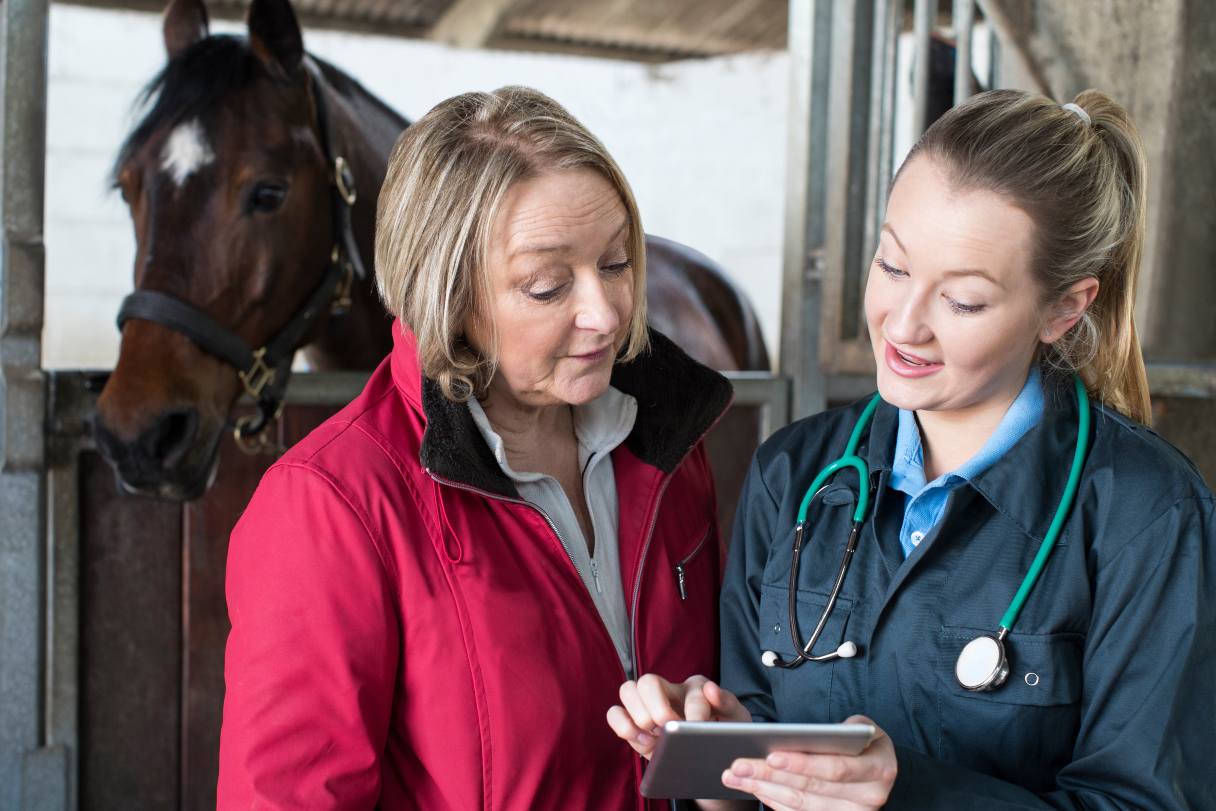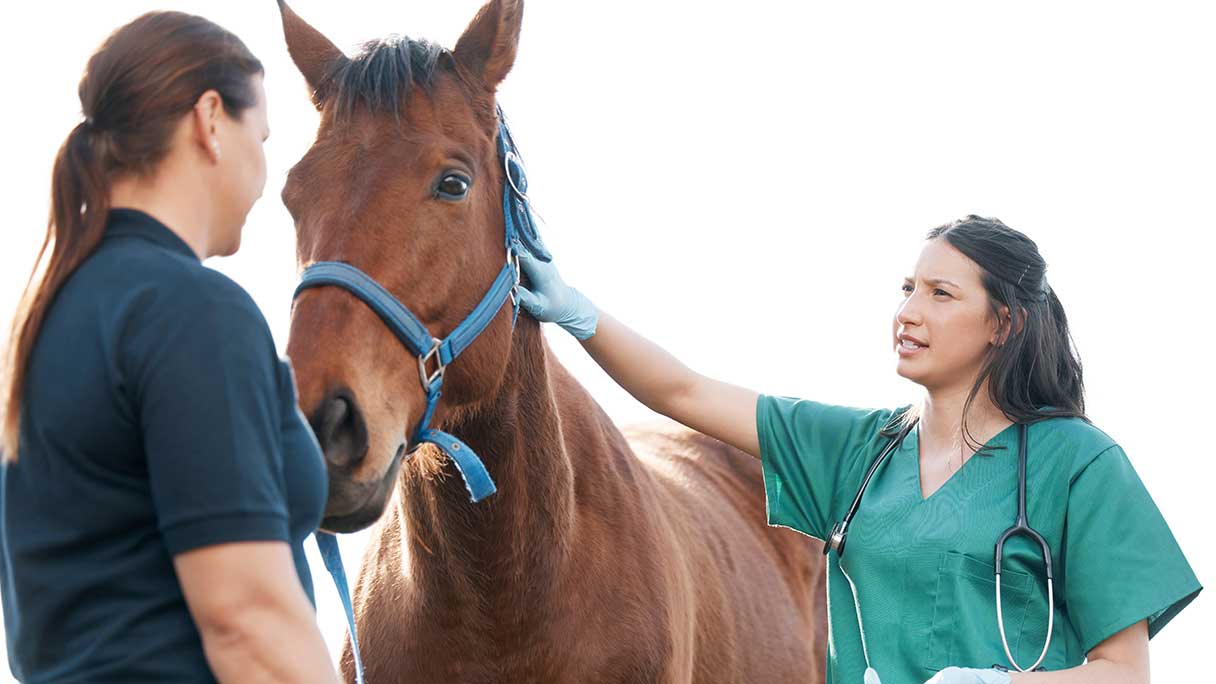How Equine Vets Can Improve Payment Collection Efforts
Are you concerned about not getting paid when you should? Here are a few strategies to make it easier for you to collect timely payments from your clients.
By Kyle Palmer, C.V.T.
Certified Veterinary Technician
Posted May 30, 2025 - 3 min read

View the original article, titled "I’m sick of not getting paid on time — or at all. How can I get better at collecting and improve my cash flow?," which was published in a supplement of the December 2024 issue of The Modern Equine Vet.
Most equine practitioners would rather float teeth on Clydesdales with hand tools all day than work on the business side of their practice. But without revenue, there is no practice, which means collecting has to be a top priority. Here are a few strategies for shrinking that pile of accounts receivable.
1. Change Your Mindset
Squeamishness about asking for payment or discounting fees when clients push back stems from misunderstanding your worth. You bring tremendous value to clients and horses, and it’s time to recognize that. Your fees reflect your value, so there’s no need to apologize when it’s time for clients to pay.
2. Create a Financial Policy and Stick to It
If you don’t have a written policy, create one stating payment is expected at the time of service. Proactively communicate your policy to every client. Post it in your reception area, on your website and at the bottom of estimates. Make your policy clear to begin with, then stand by it without exception.
3. Address Cost Up Front
Speaking of estimates, make sure to provide treatment plans with costs listed out, especially for routine care. When horse owners understand your fees from the outset and have a chance to ask questions, there’s less friction when it’s time for payment.
4. Plan Ahead for Absentee Owners
When you work with large boarding or training operations, the owner may be in another location. Find out who’s financially responsible when scheduling the appointment. Set up a payment method in advance, such as the CareCredit health and animal care credit card, and confirm you’ll text a link once services are rendered so the client can pay using their mobile device.
5. Get Comfortable With Technology
The last few years have seen phenomenal advances in mobile and contactless payment solutions. Once your clients are set up, collecting becomes as easy as a scan of a QR code and a few clicks on a smart device. A mobile payment method cuts down on the number of times you hear, “Gosh, I left my checkbook in the house.”
6. Offer Options for Care and Payment
It happens: Sometimes clients can’t afford your full recommendation. Instead of waiving or discounting your fees or opting for deferred billing, talk through financially feasible treatment options. This might mean providing some care now and some later, or offering a third-party payment option that lets the client accept the full plan now and spread the cost out in a budget-friendly way.
No matter how long you’ve sent invoices, you can make a change that improves your practice health. Diligence and communication about your financial policies can strengthen client relationships. Fewer accounts receivable, stronger client bonds and better care for horses — who wouldn’t want that?
A Flexible Financing Solution for Your Equine Veterinary Practice
Looking for a way to give your clients a flexible way to pay for care throughout their horse's lifetime? Consider offering the CareCredit credit card as a financing solution. CareCredit allows horse owners to pay for equine veterinary services over time while helping to enhance the payments process for your practice.
When you accept CareCredit, clients can see if they prequalify with no impact to their credit score, and those who apply, if approved, can take advantage of special financing on qualifying purchases.* Additionally, you will be paid directly within two business days.
Learn more about the CareCredit credit card as a veterinary financing solution or start the provider enrollment process by filling out this form.
Author Bio
Kyle Palmer, CVT, manages VCA Salem Animal Hospital in Oregon. During his 30+ years in the veterinary field, he has been manager of a mixed equine and companion animal practice, executive director of Northwest Equine Practitioners Association, a consultant and an author in veterinary management magazines.
Healthcare payment and financing solution
The CareCredit health and wellness credit card helps improve the payment experience for patients and clients, and your financial performance.
Get StartedReady to help more patients and clients get the care they want and need?
Get StartedReady to help more patients and clients get the care they want and need?
Get Started*Subject to credit approval.
The information, opinions and recommendations expressed in the article are for informational purposes only. Information has been obtained from sources generally believed to be reliable. However, because of the possibility of human or mechanical error by our sources, or any other, Synchrony and any of its affiliates, including CareCredit, (collectively, “Synchrony”) does not provide any warranty as to the accuracy, adequacy or completeness of any information for its intended purpose or any results obtained from the use of such information. All statements and opinions in this article are the sole opinions of the author. The data presented in the article was current as of the time of writing. Please consult with your individual advisors with respect to any information presented.
© 2025 Synchrony Bank.




